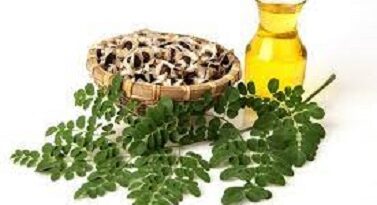Mango Leaves | Health Benefits | Uses | Side – Effects
Mango Leaves | Nutritional Value of Mango Leaves | Health Benefits of Mango Leaves | Uses of Mango Leaves | Side-Effects & Allergies of Mango Leaves | Cultivation of Mango Leaves
Mango Leaves
Mangoes are juicy stone fruit from numerous species of tropical trees belonging to the flowering plant genus Mangifera, cultivated mostly for its edible fruit.
Most of these species are in nature wild mangoes. The genus belongs to the cashew family Anacardiaceae. Wikipedia
The mango plant is native to India, hence their love of warm temperatures. The large varieties make excellent shade trees.
The tree produces dense clusters of flowers with cream-pink petals on branched panicles.
The mango fruit is roughly oval in shape, with uneven sides.
The fruit is popular in cuisines across the globe, perfect for desserts.
It is not available all year round but the leaves of the tree are.
Most times, the leaves waste away because many are unaware of the medicinal properties of the leaves.
The leaves of the Mango tree, which do not always seem as appetizing as the juicy fruit, are full of antioxidants.
The leaves are shiny, sharp-tipped and dark green. They are either elliptical or lanceolate with long petioles and a leathery texture.
They are purplish or reddish when tender and new, and grow into a dark green color and have a pale underside.
The mango leaves are great reservoirs of healthy nutrients full of healing and medicinal properties.
The leaves have been used in ayurvedic medicine throughout the Indian subcontinent for centuries.
In Nigeria, whenever it comes to mangoes, we never consider beyond the fruit.
We are so passionate with the fruit that we miss out on the health benefits provided by leaves.
The health benefits are so varied and extensive that they are given immense importance in eastern medicine too.
Health Benefits of Mango Leaves
Mango leaves contain a lot of beneficial chemical compounds to remedy various diseases, most importantly as diabetes medication, hypertension, and blood pressure reduction.
The leaves contains steroid that serves as hormone supply, Flavonoid as an antioxidant, Gallic acid as antifungal and antiviral properties, and tannin as diarrhea remedy.
It also treats or regulates many of the contemporary health problems and lifestyle diseases.
It treats dysentery and is good for the gut overall. Mango leaves can cure respiratory problems.
Restlessness is a condition that is irritating and creates a lot of problems.
The leaves can effectively fight restlessness. It can also heal burns and is a good remedy for earaches.
Other properties possessed are: relieving asthma symptoms, oral care, mango leaf uses for hair, treating cough and cold.
Also, fertility, treating kidney problems like kidney stones, preventing hiccups and throat problems, weight loss, and other benefits.
Nutritional Value of Mango Leaves
The leaves are rich in vitamins C, B, and A. They are also rich in flavonoids and phenol which impart anti-oxidant properties to the leaves.
Uses of Mango Leaves: How to use Mango Leaf
There are various ways of using the mango leaf for medicine ranging from boiling, drying, brewing, and powdering.
One method is by preparing mango leaf tea using the leaf extract. All you need to do is dry the leaves and boil them in water.
Another popular way of using the leaves is by drying it, burning them and applying the residual ash to relieve toothache.
Side-Effects & Allergies of Mango Leaves
These leaves are safe as they have been no reported side effects but it should be taken in moderation and not combined with drugs to prevent drug-herb interaction.
Cultivation of Mango Leaves
Mango trees grow best in tropical and sub-tropical climates.
Mango tree planting is suitable in zones where temperatures do not usually dip below 40 F (4 C.).
They are deep-rooted plants that may become large specimens in the landscape.
The tree is evergreen and generally produced off root stocks that increase the hardiness of the plants.
Mango trees begin fruit production in three years and form fruit quickly.
How to cultivate mangoes?
- Firstly, get a fresh mango pit and slit the hard husk.
- Secondly, remove the seed inside and plant it in a seed starter mix in a large pot.
- Then, position the seed with ¼-inch protruding above the soil surface when growing mango trees.
- Lastly, keep the soil evenly moist and place the pot where temperatures remain at least 70 F/(21 C.)
Mango Leaves Near Me | For Sale | Where to Buy in Nigeria
In Nigeria, you can easily find plenty of mango trees growing wild on the roadside.
You either pick up the fallen dried leaves or pluck the hanging leaves.
But, in cases where you don’t have easy access to mango trees, you can find mango dried leaf in tea bags in your local specialty grocers, organic markets, or online on a website such as Amazon.
Summary
Whether you choose to eat them, drink them as tea or juice, decorate your home or just admire from afar, the tree wouldn’t be the same without its leaves.



